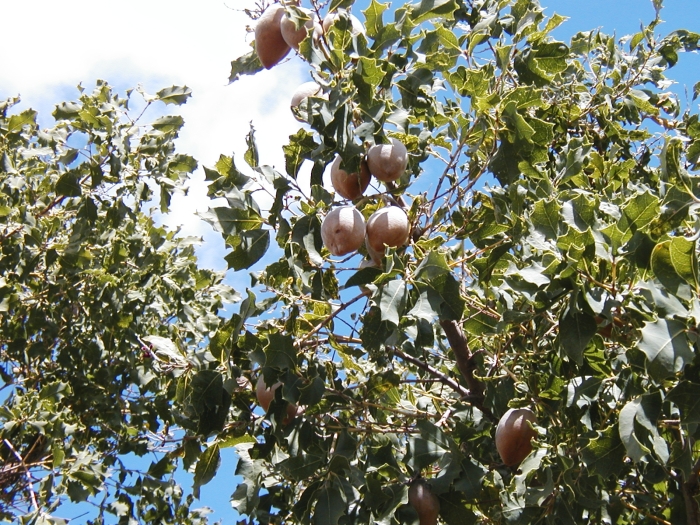Western Woody Pear
(Xylomelum occidentale)
Western Woody Pear (Xylomelum occidentale)
/
/

Casliber
CC BY-SA 3.0
Image By:
Casliber
Recorded By:
Copyright:
CC BY-SA 3.0
Copyright Notice:
Photo by: Casliber | License Type: CC BY-SA 3.0 | License URL: https://creativecommons.org/licenses/by-sa/3.0 | Uploader: Casliber | Publisher: Wikimedia Commons | Title: Xylomelum_occidentale.jpg |




































Estimated Native Range
Summary
Xylomelum occidentale, commonly known as Western Woody Pear, is an evergreen tree or large shrub native to the open woodlands and forest margins of Western Australia. It typically grows to a height of 2 to 8 meters (6 ft 7 in to 26 ft 3 in) and is characterized by its epicormic buds, which allow it to resprout after fire damage. The Western Woody Pear blooms between December and February, producing cream-white flowers that are finely covered in silky hairs and are sulphurous yellow in color. These flowers appear on spikes at the end of its branches and are quite showy. The fruit, resembling a pear, is over three inches long, one and three-quarter inches wide, and deeply split along one edge after ripening, adding to the plant’s ornamental value. The leaves have spiny margins, and the bark is greyish to black, finely cracked, and persistent.
The Western Woody Pear is valued for its unique pear-shaped fruit and attractive, spiny foliage. It is used in cultivation for ornamental purposes, particularly in xeriscaping due to its low water requirements. It is also suitable for creating natural barriers or as a feature plant in Australian-themed gardens. This species thrives in full sun and well-drained soils, and it is adapted to survive in low-nutrient environments. While it is drought-tolerant, it may benefit from occasional watering during extended dry periods.CC BY-SA 4.0
The Western Woody Pear is valued for its unique pear-shaped fruit and attractive, spiny foliage. It is used in cultivation for ornamental purposes, particularly in xeriscaping due to its low water requirements. It is also suitable for creating natural barriers or as a feature plant in Australian-themed gardens. This species thrives in full sun and well-drained soils, and it is adapted to survive in low-nutrient environments. While it is drought-tolerant, it may benefit from occasional watering during extended dry periods.CC BY-SA 4.0
Plant Description
- Plant Type: Tree
- Height: 6-26 feet
- Width: 6-18 feet
- Growth Rate: Moderate
- Flower Color: Cream
- Flowering Season: Winter
- Leaf Retention: Evergreen
Growth Requirements
- Sun: Full Sun
- Water: Low
- Drainage: Fast
Common Uses
Bee Garden, Bird Garden, Butterfly Garden, Low Maintenance, Potted Plant
Natural Habitat
Open woodlands and forest margins
Other Names
Common Names:
Scientific Names: , Xylomelum occidentale,
GBIF Accepted Name: Xylomelum occidentale R.Br.